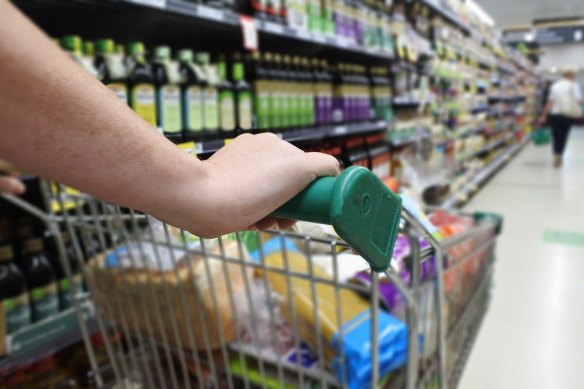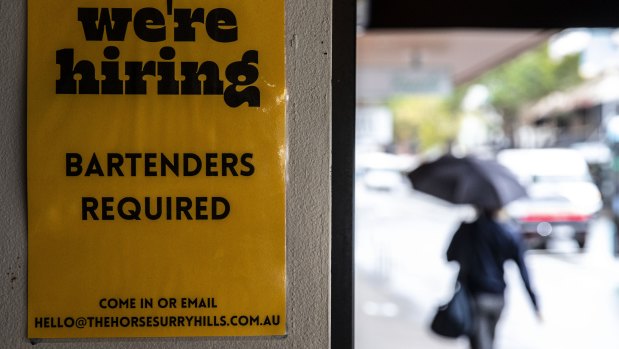By Shane Wright
Australians should expect more relief at the supermarket checkout as the rate of food inflation slows to pre-COVID-19 levels, a development that could influence the Reserve Bank’s looming decision on interest rates.
Decreased growth in the price of poultry, breakfast cereals, cheese and other items has dragged food inflation down to 3.3 per cent over the past 12 months, lower than the overall inflation rate of 3.8 per cent.
Lower beef and lamb prices have also contributed to sinking food inflation, allied with improvements in global supply chains and a slowing demand as cash-strapped consumers seek bargains or stop buying dearer items.

Food inflation has fallen almost two-thirds since its 2022 peak as supply chains improve and demand starts to ease.Credit: iStock
Social services advocates have called for the Reserve Bank board to cut rates at its two-day meeting beginning on Monday.
Financial markets expect the RBA to hold the official cash rate at 4.35 per cent, where it has been since November. The same markets believe the bank will start reducing rates by February, and predict a cash rate of 3.35 per cent by Christmas 2025.
A key concern for the central bank has been how long it has taken inflation to start to ease. Headline inflation rose from 3.6 per cent in the March quarter to 3.8 per cent in the second quarter.
The closely watched underlying measure of inflation rose by 0.8 per cent in the June quarter, slightly softer than expected, pulling the annual rate down to 3.9 per cent. It was the sixth consecutive quarterly fall in this measure.
Australian Bureau of Statistics data shows food inflation peaked at 9.2 per cent in the December quarter of 2022, surpassing the overall inflation rate, which reached 7.8 per cent, and more than doubling the rate of wage growth.
At the time, breakfast cereal prices had soared by 15.3 per cent over the previous 12 months, poultry had jumped by 11.6 per cent, milk by 17.9 per cent and the likes of sunflower and olive oils by 20.8 per cent.
Since that peak, inflation has dropped. Lamb prices have fallen almost 11 per cent since June last year and are now lower than before the pandemic.
Breakfast cereal inflation has fallen to 4.1 per cent, or lower than its pre-COVID-19 level; cheese inflation is at 2.8 per cent compared to 16.8 per cent in 2022; and tea and coffee inflation has tumbled from 11.9 per cent to 1.1 per cent.
AMP chief economist Shane Oliver said the fall in food inflation was important because, along with petrol prices, the weekly grocery shop was a constant reminder to consumers of price pressures.
Oliver believes the Reserve Bank will start cutting rates by early next year. As inflation in food prices eased, he said, the RBA’s fears that consumers would come to expect ever-increasing prices would subside.
“People tend to focus on petrol and food prices because they constantly see them and feel them. A slowdown in prices at the supermarket would help deal with inflation expectations,” he said.
Nomura economists Andrew Ticehurst and David Seif said unemployment was probably still above the level at which inflation would start to ease, while there were broad price pressures nationally.
“We think [the RBA] will judge it too soon to announce the ‘all-clear’, and too soon to seriously consider the case for a lower cash rate,” they said.
Inflation for oils and fats – heavily affected by Russia’s invasion of Ukraine and more recently poor growing conditions across the world – is still at 11.5 per cent over the past year.
Ukraine accounted for almost 50 per cent of the world’s sunflower oil exports before 2022. Sunflower oil soared from $US640 a tonne in 2020 to $US2350 a tonne a month after the invasion.
Prices have eased but are still about $US905 a tonne. The shortage of sunflower oil pushed up the prices of other oils such as palm oil.
Over the past year, olive oil producers in the southern Mediterranean and in Australia have been hit by poor weather conditions, reducing global and domestic supplies. It has left the prices for oils and fats almost 55 per cent higher than before the pandemic.
The Australian Council of Social Service believes the Reserve Bank should use the meeting to cut official interest rates, arguing the economy and jobs market are much weaker than the bank believes. It said entry-level vacancies had fallen by a third since June 2022, with an additional 100,000 people unemployed and an extra 99,000 people under-employed.

Job vacancies are starting to dry up, particularly for young people.Credit: Jessica Hromas
Jobs growth had been driven by a 316,000 increase in publicly funded jobs, such as in health and education jobs. Private sector jobs had barely grown.
“Official interest rates went too far last year, shifting the balance of risks from an upsurge in inflation to an upsurge in unemployment and a recession,” ACOSS said.
The Morning Edition newsletter is our guide to the day’s most important and interesting stories, analysis and insights. Sign up here.